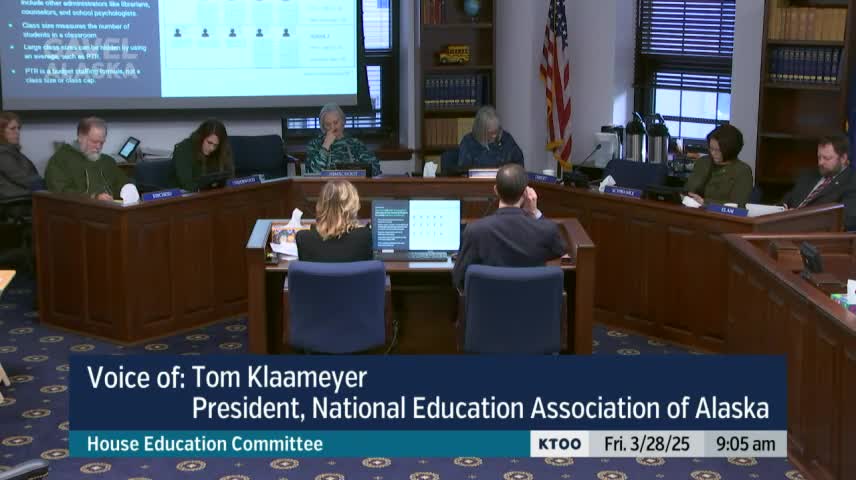Representative Fields critiques Alaska's class size metrics and advocates for learning environment improvements
March 28, 2025 | 2025 Legislature Alaska, Alaska
This article was created by AI summarizing key points discussed. AI makes mistakes, so for full details and context, please refer to the video of the full meeting. Please report any errors so we can fix them. Report an error »

Concerns over Alaska's student-to-teacher ratio (PTR) dominated discussions at the House Education Committee meeting on March 28, 2025. Lawmakers highlighted the misleading nature of PTR as a budgeting metric, which includes all certified staff, not just classroom teachers. Representative Fields pointed out that while PTR can track staffing trends, it fails to accurately reflect classroom conditions.
Over the past 15 years, Alaska's PTR has risen from 15.6 to 18.42, indicating that students are now 18% more numerous per certificated adult than in 2010. This statistic can create a false impression of manageable class sizes. For instance, an average class size of 20 could mask the reality of one class with 5 students and another with 35, leading to vastly different learning environments.
A real-world example from Huffman Elementary in Anchorage illustrated this issue. Although the average class size is reported as 24.9, nine out of twelve classes exceed this average, meaning most students are in larger classes than the average suggests. This discrepancy raises concerns about the educational experiences of students in overcrowded classrooms versus those in smaller settings.
Advocates, including NEA Alaska, emphasized the need for class size caps to protect students' learning environments. They also called for caseload caps for special education teachers and related service providers to ensure equitable educational experiences for all students. The meeting underscored the critical need for accurate metrics and protective measures in Alaska's education system to address the challenges posed by increasing class sizes.
Over the past 15 years, Alaska's PTR has risen from 15.6 to 18.42, indicating that students are now 18% more numerous per certificated adult than in 2010. This statistic can create a false impression of manageable class sizes. For instance, an average class size of 20 could mask the reality of one class with 5 students and another with 35, leading to vastly different learning environments.
A real-world example from Huffman Elementary in Anchorage illustrated this issue. Although the average class size is reported as 24.9, nine out of twelve classes exceed this average, meaning most students are in larger classes than the average suggests. This discrepancy raises concerns about the educational experiences of students in overcrowded classrooms versus those in smaller settings.
Advocates, including NEA Alaska, emphasized the need for class size caps to protect students' learning environments. They also called for caseload caps for special education teachers and related service providers to ensure equitable educational experiences for all students. The meeting underscored the critical need for accurate metrics and protective measures in Alaska's education system to address the challenges posed by increasing class sizes.
View full meeting
This article is based on a recent meeting—watch the full video and explore the complete transcript for deeper insights into the discussion.
View full meeting
